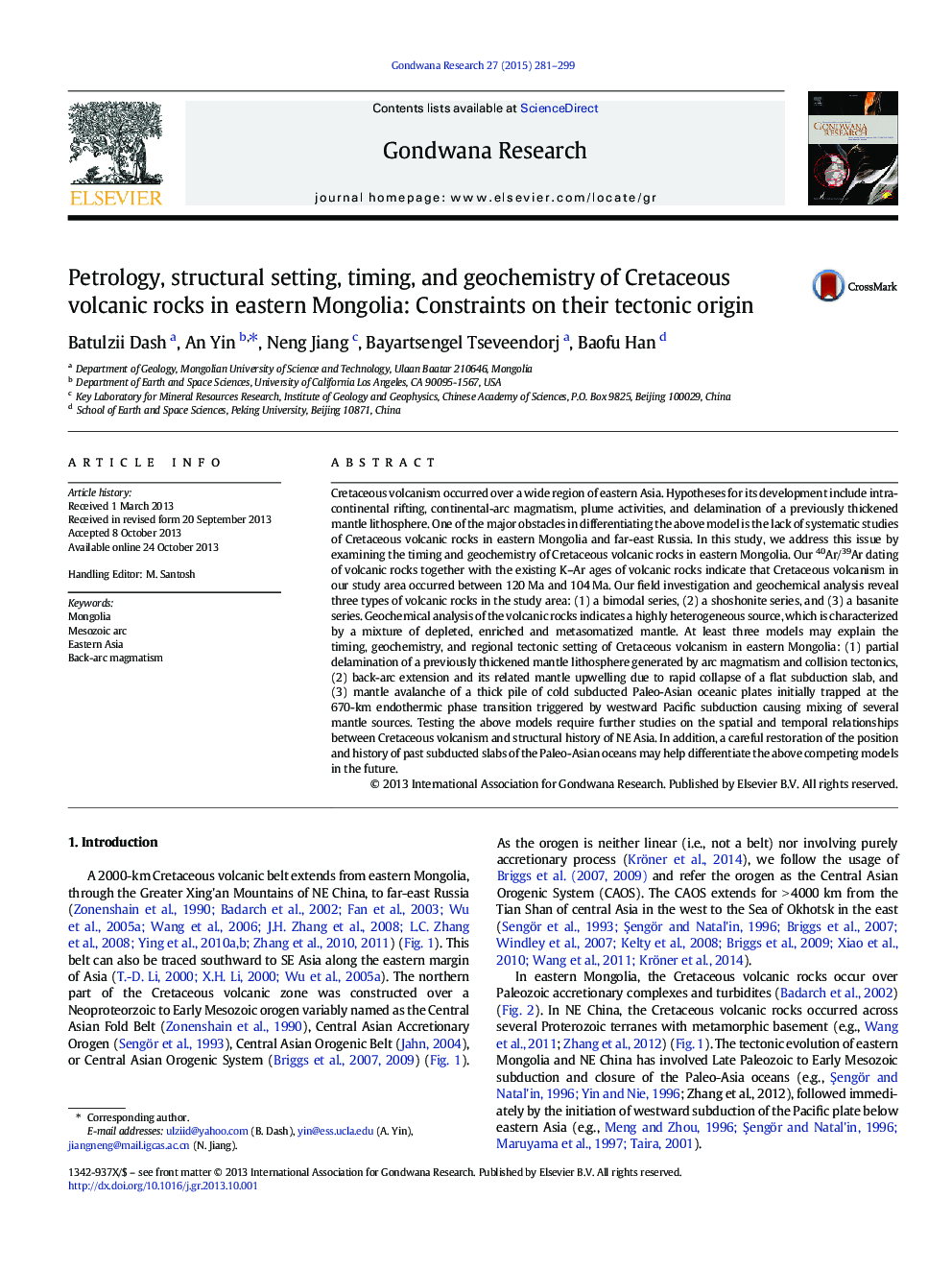| کد مقاله | کد نشریه | سال انتشار | مقاله انگلیسی | نسخه تمام متن |
|---|---|---|---|---|
| 4727188 | 1356364 | 2015 | 19 صفحه PDF | دانلود رایگان |
• Coeval Cretaceous volcanism and extension in Eastern Mongolia
• Volcanism between 120 and 105 Ma
• Volcanism occurred in an extensional back-arc setting
Cretaceous volcanism occurred over a wide region of eastern Asia. Hypotheses for its development include intra-continental rifting, continental-arc magmatism, plume activities, and delamination of a previously thickened mantle lithosphere. One of the major obstacles in differentiating the above model is the lack of systematic studies of Cretaceous volcanic rocks in eastern Mongolia and far-east Russia. In this study, we address this issue by examining the timing and geochemistry of Cretaceous volcanic rocks in eastern Mongolia. Our 40Ar/39Ar dating of volcanic rocks together with the existing K–Ar ages of volcanic rocks indicate that Cretaceous volcanism in our study area occurred between 120 Ma and 104 Ma. Our field investigation and geochemical analysis reveal three types of volcanic rocks in the study area: (1) a bimodal series, (2) a shoshonite series, and (3) a basanite series. Geochemical analysis of the volcanic rocks indicates a highly heterogeneous source, which is characterized by a mixture of depleted, enriched and metasomatized mantle. At least three models may explain the timing, geochemistry, and regional tectonic setting of Cretaceous volcanism in eastern Mongolia: (1) partial delamination of a previously thickened mantle lithosphere generated by arc magmatism and collision tectonics, (2) back-arc extension and its related mantle upwelling due to rapid collapse of a flat subduction slab, and (3) mantle avalanche of a thick pile of cold subducted Paleo-Asian oceanic plates initially trapped at the 670-km endothermic phase transition triggered by westward Pacific subduction causing mixing of several mantle sources. Testing the above models require further studies on the spatial and temporal relationships between Cretaceous volcanism and structural history of NE Asia. In addition, a careful restoration of the position and history of past subducted slabs of the Paleo-Asian oceans may help differentiate the above competing models in the future.
Figure optionsDownload as PowerPoint slide
Journal: Gondwana Research - Volume 27, Issue 1, January 2015, Pages 281–299
